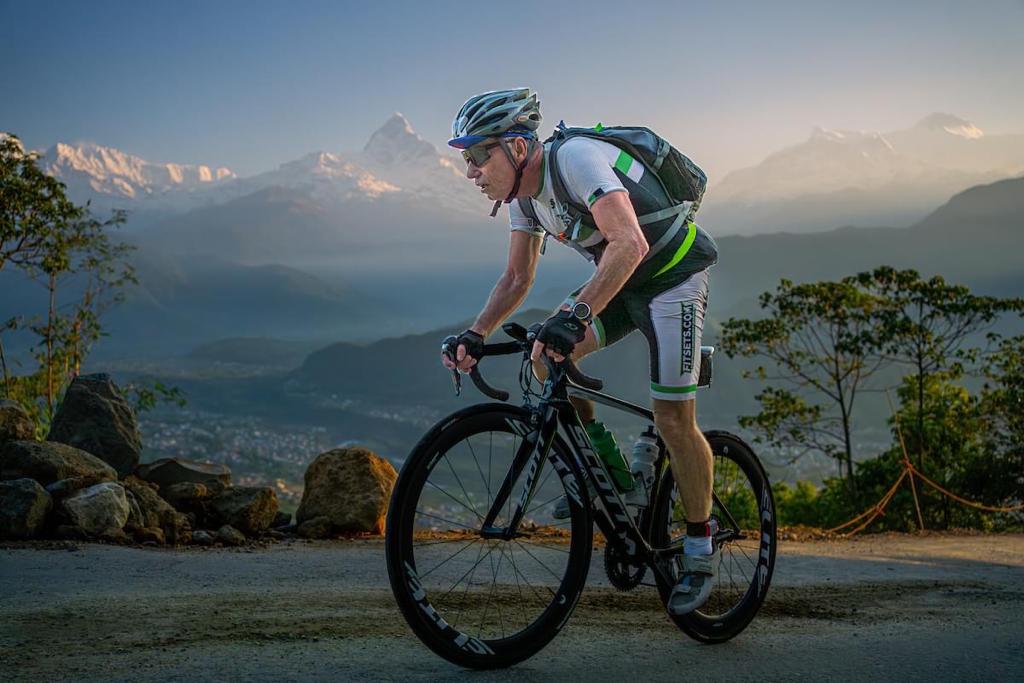


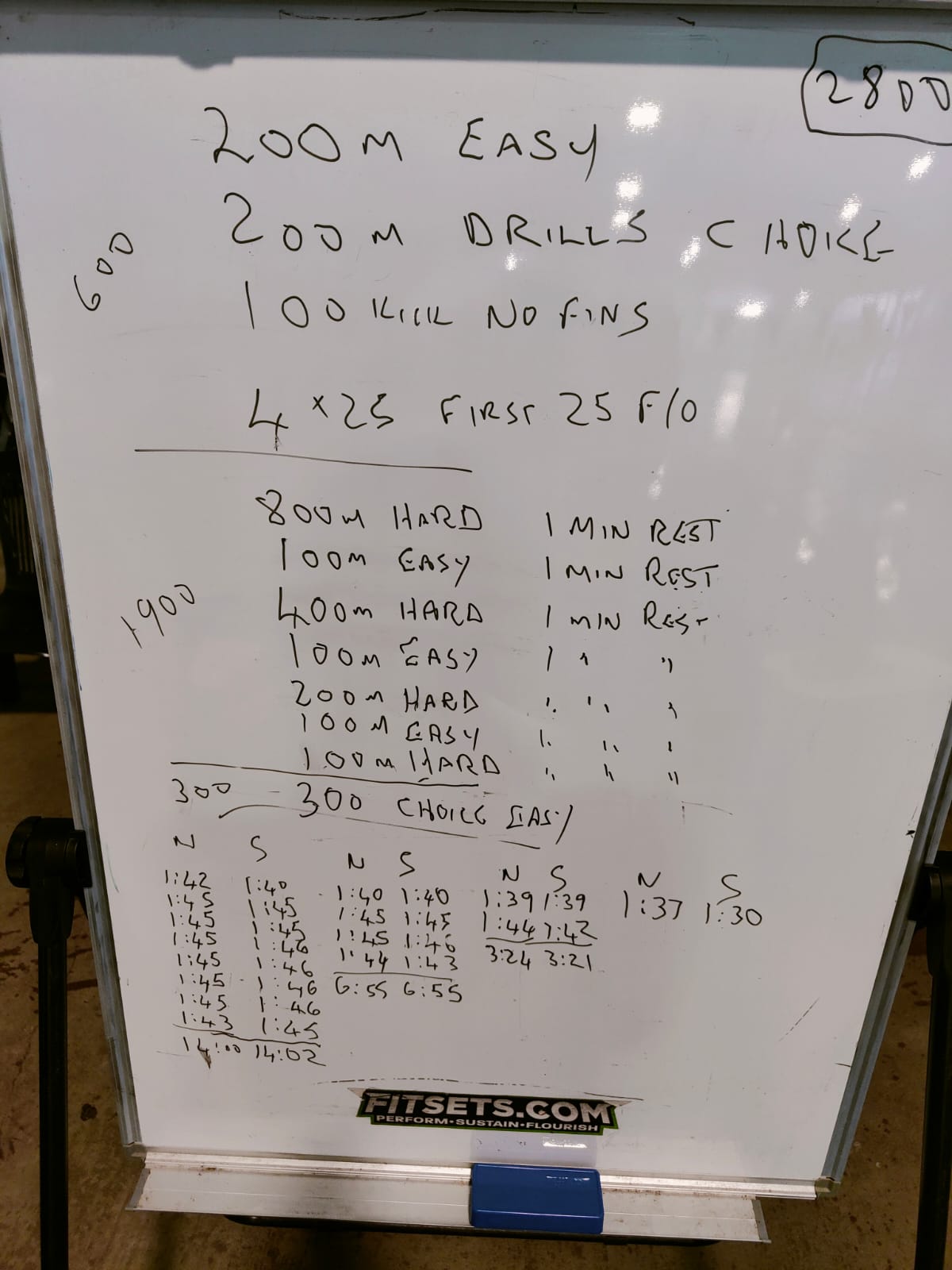
Pacing strategies are individual. The best depends on many variables: fitness, distance experience, stamina, mindset and intuition, to name a few.
Our swim squad is currently working on pacing to determine the best strategy for each scenario. It is trial and error. Each athlete is tested over varied distances on each strategy, measuring results.
There are three basic approaches:
Sometimes referred to as a negative split. You start at an intensity you can increase. As you progress, you increase intensity slowly to slightly increase or maintain pace as stress accumulates and suffering increases.
This is the most common strategy suggested by coaches. It can be practised, easily coached, and executed through speed and heart rate metrics. The start of the race is controlled, and as the race progresses, the athlete has more discretion on intensity as the remaining distance decreases. A safe strategy for achieving a fixed or small range target.
Highly recommended for novices and inexperienced. Also recommended for time-trialists after a predetermined outcome.
With this strategy, you start at a high intensity and hold on throughout. As you progress, you may find the pace reducing and the stress maxes out; however, those with a strong mindset can push through the suffering and achieve a better result than the build strategy.
This strategy is commonly used by inexperienced athletes who believe in the “Go hard or Go home” approach, and generally, it does not end well. Experienced athletes can use this strategy in true racing situations where the pacing is used to break or follow competitors. This takes an extraordinarily strong mindset and is reserved for those who can truly suffer.
Highly recommended for competitive racers with a strong mindset and much experience. Not suited for all.
Surging is a combination of build and push/hold. You surge at an intensity slightly higher than you think you can sustain for the remaining race distance. As the suffering increases to an uncomfortable level, you reduce the intensity a little to recover. Once recovered, you surge again. Most athletes discover they only need to reduce marginally to recover with practice. This approach helps us avoid settling on a pace or assuming the pace of those around us.
This strategy allows intermediate athletes to build race experience but still seek results. When trying this strategy, I sometimes ask the athlete to control the race’s first half and use surging in the latter half.
Highly recommended for intermediate athletes and novice athletes unsure of how to pace to build race experience. In training, I frequently provide coached athletes “Unders and overs” sets where they modulate between slightly above and slightly below race pace. They often achieve personal bests in this session, improving their Time Trial results for the same distance.
In conclusion, the pacing strategy is highly individual. The key is to test, practice and measure. Your ideal strategy may differ by distance and environmental conditions.
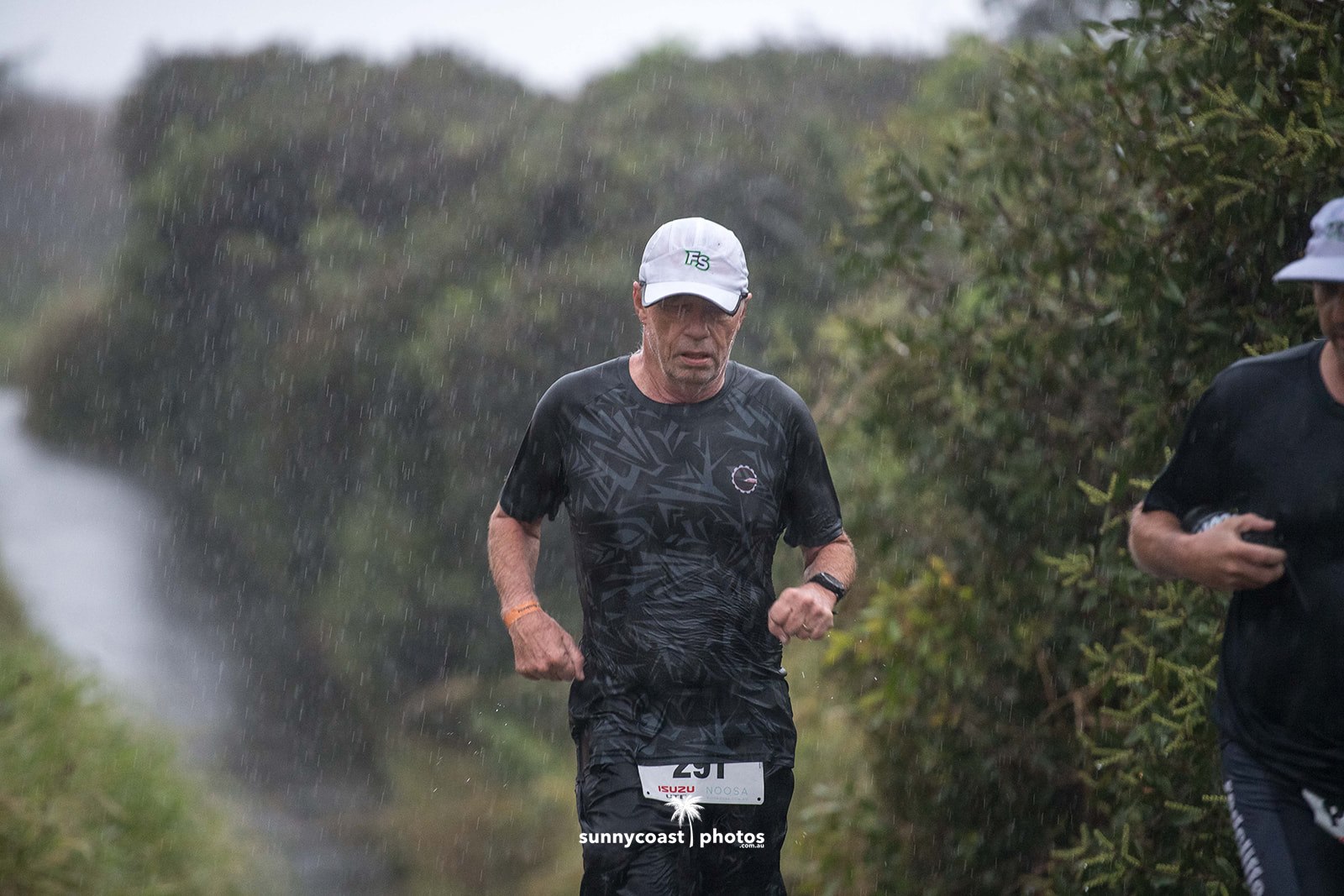
Warning: Long race, longish read!
Being 59 years old, I need to protect myself against injury and stress fractures. My strategy was high volume, but short distances. The longest ride was 145km, and the longest run was 26km, however, peaked at 80km running and 300km riding per week. The strategy was to avoid training in atrophy. There were frequent double-run and triple-ride training days.
Training – 80/20 Short distance, high volume
Fuel base: Trailbrew Sponsorship: EliteEnduranceProducts Race: Ultraman Australia Location: Noosa
Swim 10km | Ride 421km | Run 84.3 | Ride Elevation 3800m
A huge thanks to my crew. This event has no aid stations, and much time is spent in the rural hinterland and coastal paths. You would think there is a lot of waiting for the crew. Wrong, it is full-on! A good crew is essential to a good race. Huge thanks to Mal, Sherie, Woody and Mair!
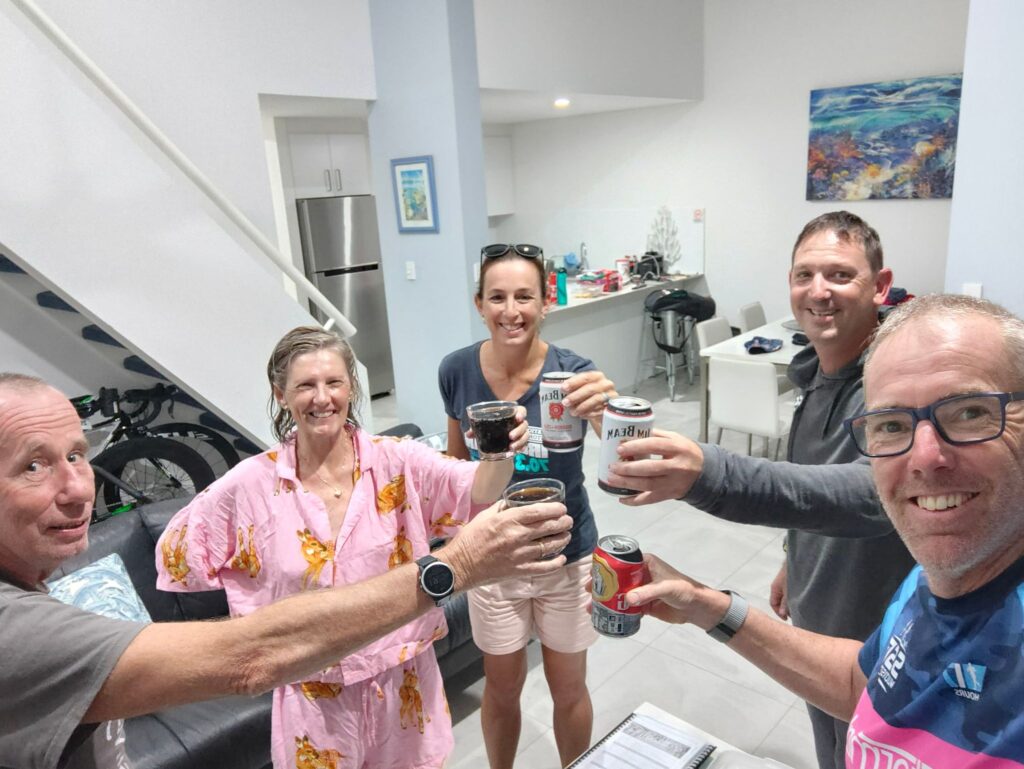
Being the oldest competitor, the goal was to finish the race within cut-offs! Maybe close to mid-pack.
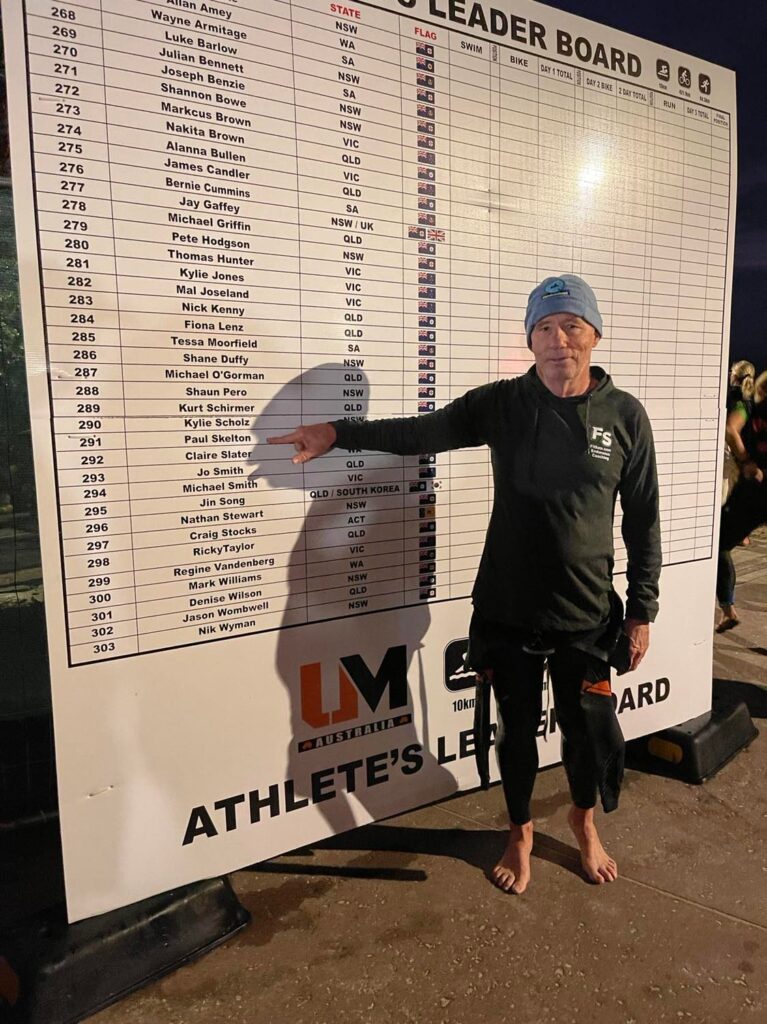
Not an unfamiliar distance for me, took it steady with great navigation from Mal. Hit halfway in 15th feeling solid, at 8.5km in 13th. Felt good so gave it a nudge and finished in 9th place at 3:00:22. Longest 22 seconds ever!
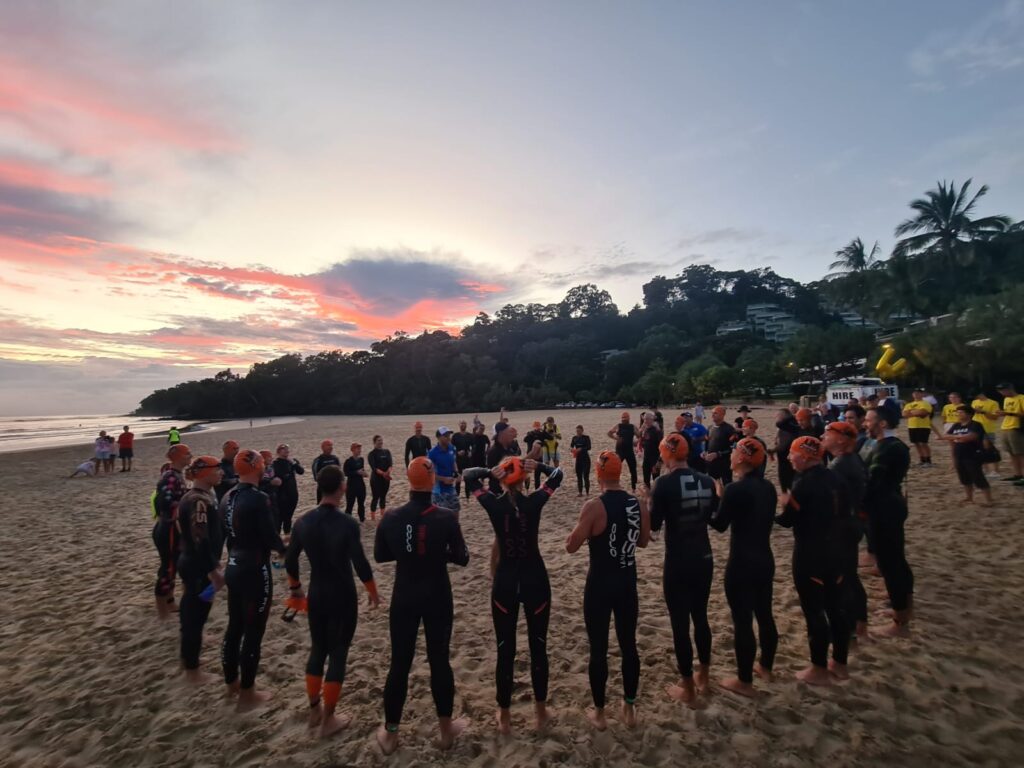
The plan was to ride like an IRONMAN race. Steady but solid. Felt ok for 1st 30km but soon felt bloated due to overconsuming carbs early combined with an overdose of sodium from the swim. Really battled fueling for the rest of the ride.
The ride is hilly with two cat hills at 60 and 65 km. I am usually a good climber, but today my HR skyrocketed to 182. Climbed off, ditched the ego, and walked both hills. I later discovered my rear wheel had delaminated and was dragging the brake! The walking wore out my left cleat so it would not clip in for the last 85 km!
Limped through to 130km then stopped and threw up considering my options for the rest of the race! Got going again and missed a turn due to poor focus and added 4k to the ride. Eventually finished 5:37:21 for the ride, 8:43:02 for the day. 25th on the bike, but 13th for the day!
I clawed myself off the bike, broken. Put on a smile for the crew, but seriously had doubts about the 275km day 2 ride! The crew had found new cleats, and EliteEnduranceProducts loaned new a set of wheels.
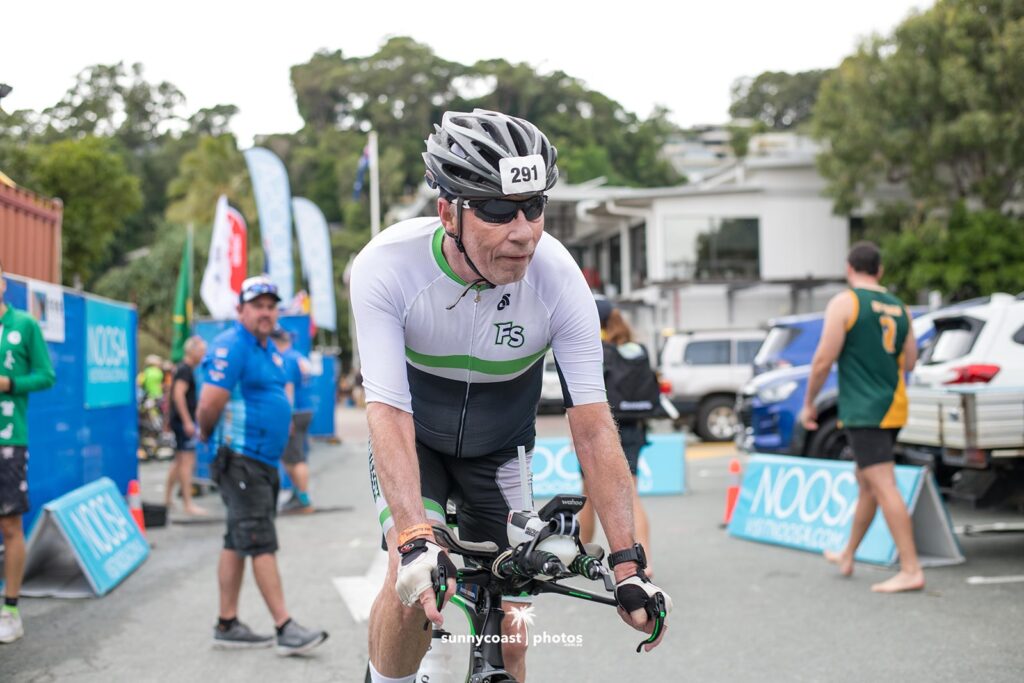
We were led out by a police car for the first 9km in order for our bike time for day 1. When we were released I let them go and dropped to the back so I could ride steady at my pace. The first test for the legs was at 55km with the hill up to Sunrise rd. Found it easy passing 5 others with no real effort and HR of 140 bpm. My confidence returned.
The crew were awesome, one waited at the bottom of feed hills with a radio to tell the crew at the top what I needed. We were well synced, I got what I needed every time.
From there it was chipping away focusing on the next rider to pass. Controlled nutrition tightly at 30gm per hour Trailbrew and the odd cookie. Counting down the milestones. 200km to go… 180 and just an ironman ride to go… 150 to go… 90km, Just a 70.3 ride to go… I developed a goal to get to the top of the Kenilworth climb at 200km with a ride average of 28 km/h and hold on to it to the end. I expected the rot to hit the legs at around 200km and I would need to drag but butt home from there. 200km came and went. 220km and Yardina, nothing happened. Hit Twin waters, with a ride average of 28.5 km/h. Tailwind home, legs still had plenty so ramped up the power and 34km/h pace. Cruised home with a ride average of 29 km/h. 09:39:34, 16th for the day, 15th for the race.
Day 2 was my best ride ever, enjoyed every minute. I told the team that whatever happened on Day 3 would not ruin this. Day 2 Ultraman would always be my day!
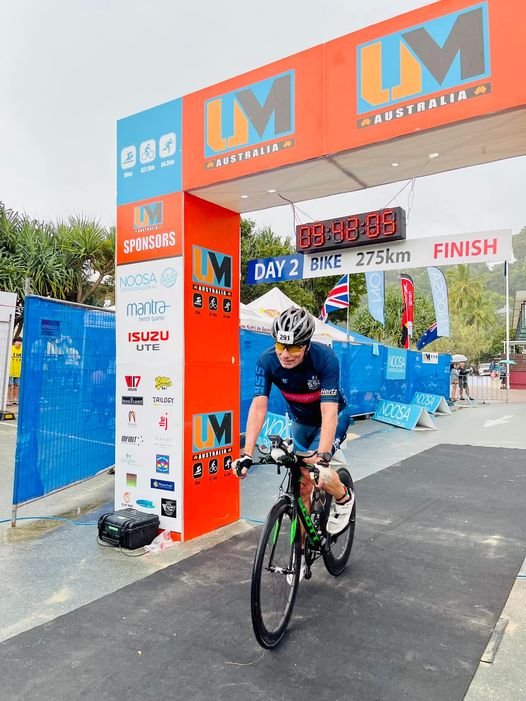
Rain, rain and more rain. Standing at the start we were all soaked through to the bone, socks and all. This was going to be one tough day!
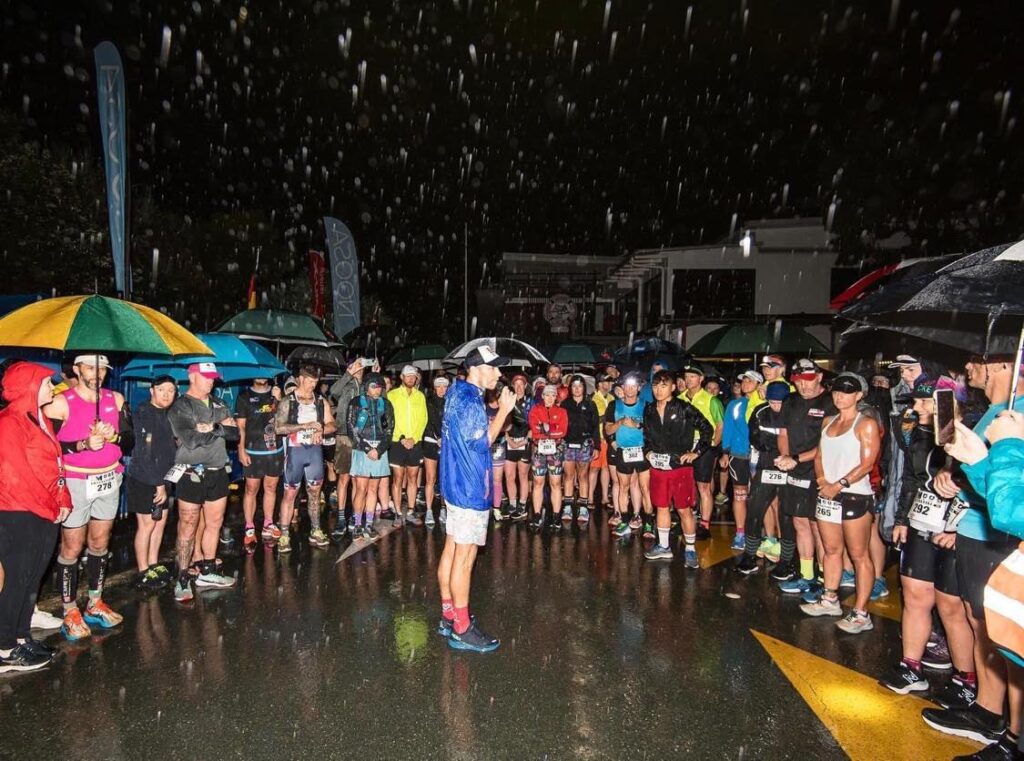
Started at the back again singing “Let ’em go” (to the Frozen tune) and ran my pace. The first 5 km was solo with pacers joining from there. Woody paced the first section, pace steady, still pouring torrential rain. At 16km Sherie paced, we had a good yarn, hit flooded roads and waded through, and totally missed the 21km marker! And still, it poured down. Walked the Coolum hill after which Mal took on pacing duties.
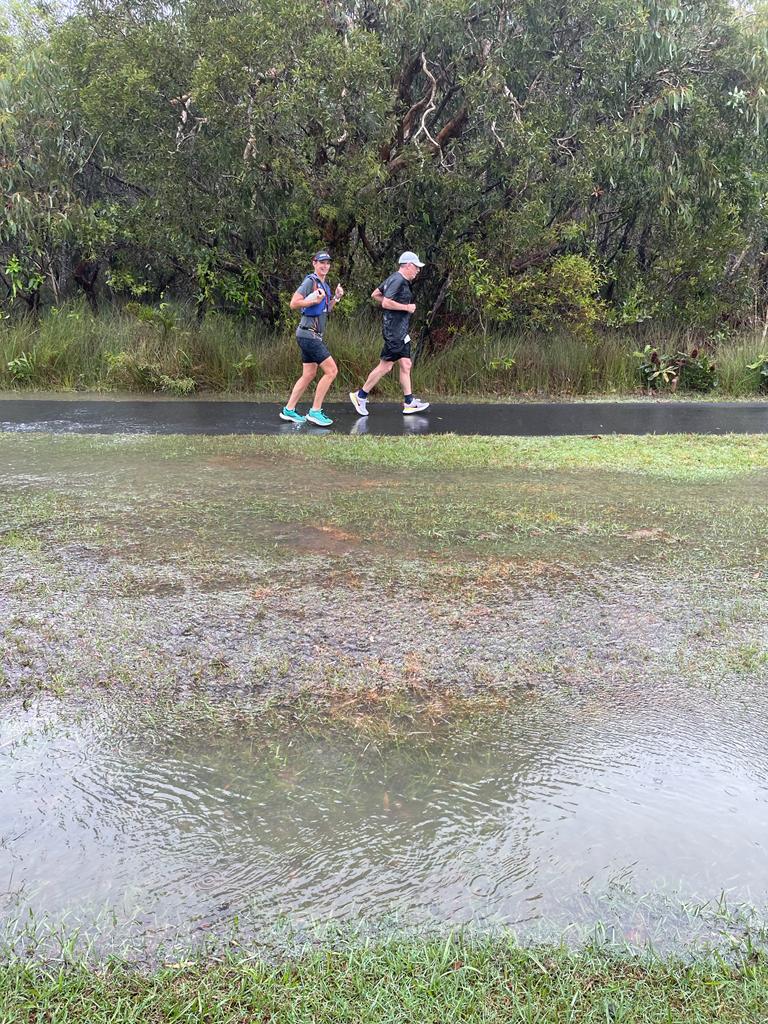
Fuel was looked in at 2 calories a minute, or 120 cal per hour (30 gm) with the odd ½ banana or cookie and caffeine gummie.
Hit 42km on 4:45, still feeling steady, amazingly no blisters! I was now waiting for the inevitable wall to hit at around 60km. Again nothing. At 64km my sugar dropped. Sherie handed me a Gel, next time we saw the crew I grabbed a coke and we were back on pace within 5 min. Great Crew!
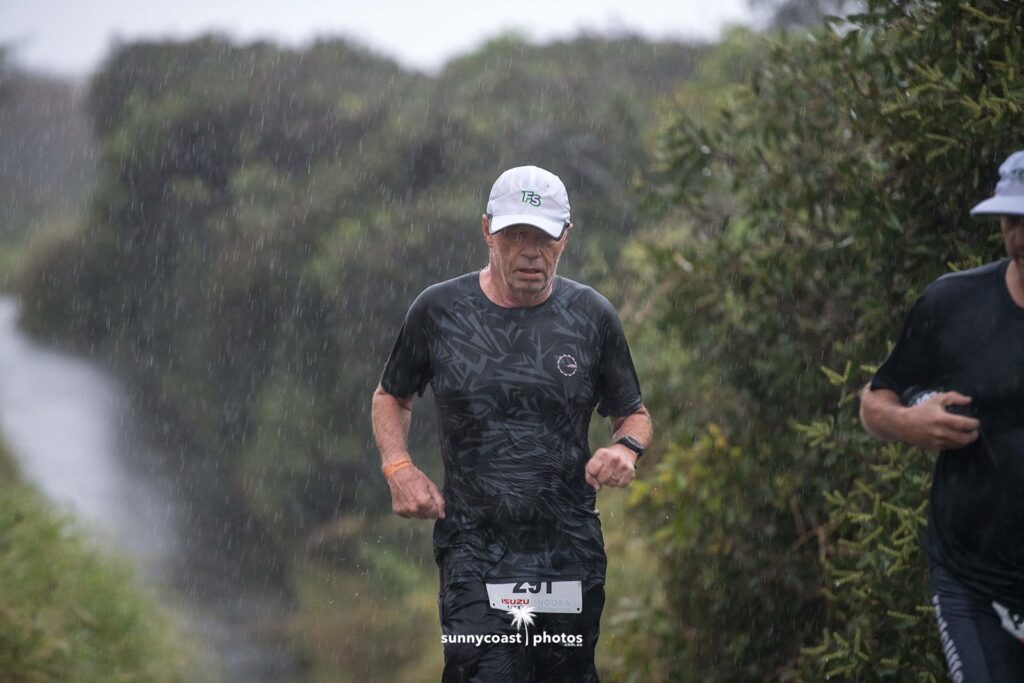
Mal jumped into pacing at 18km to go. Still raining! Passed a couple of runners, Wadded through a couple of streams. Downhills were now agony, the bike legs were finally biting! At 10 to go Mal looked back a said someone was catching. I felt I still had legs so we accelerated. After 3 km I worked out Mal was telling porkies, there was no one catching, but the strategy worked, we were flying. I was hurting, but I didn’t realise Mal was hurting too having run an IRONMAN the previous weekend! Still Raining!
Down the seven stairs, onto the beach where the crew were waiting. 400m along the beach and we were done.
The finishing pic shows an expression that wraps up the weekend. Relief, pride, exhaustion all in one shot.
Run time 9:40:36 18th place.
Race time: 28:03:14 16th Place.
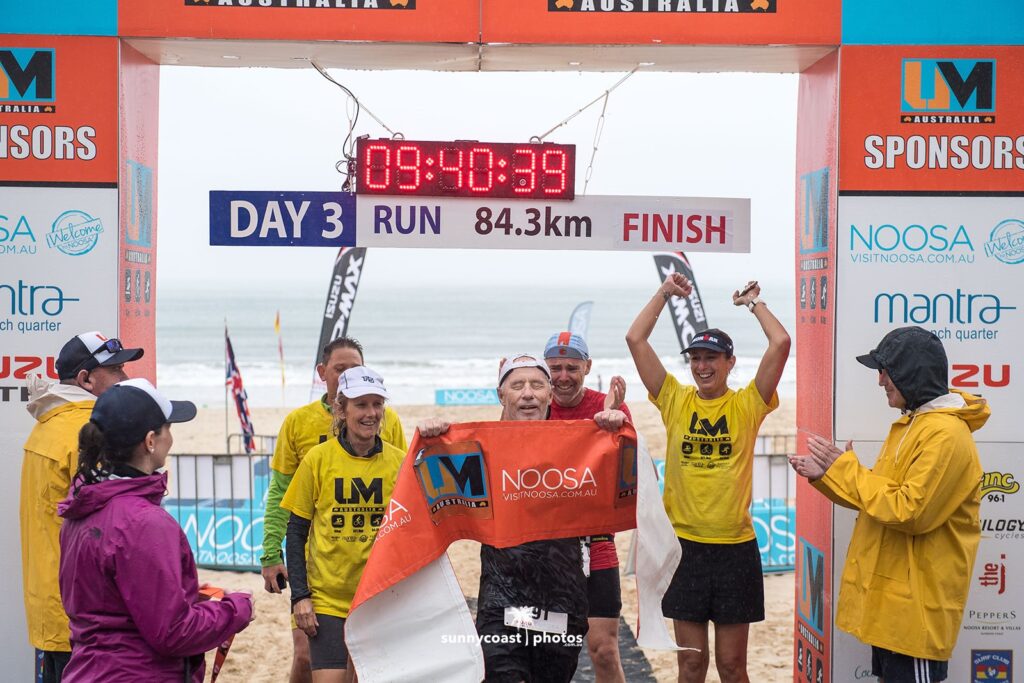
Thank you to the organisers, volunteers, crews and participants. What a weekend, I strongly recommend it for anyone wanting to test themselves.
When I signed up I really expected to struggle given my age. My expectation was to be a back marker, but that changed 2 months out when the high volume, short distance training strategy started to kick in. I certainly exceeded my expectations.
As Buzz Lightyear said: “One day you’re going to come up against something you don’t think you can do, and then you’re going to do it. And from then on, you’re you.”
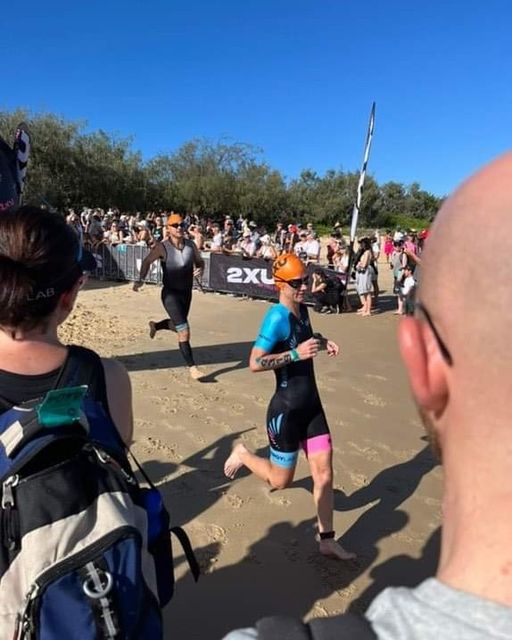
A massive shout out for @carly_loves2run who completed Mooloolaba triathlon yesterday which included a 1500m swim. Carly contacted me just 6 months ago wanting some help with her swim. Most athletes need assistance with technique to get faster. Carly literally could not swim. When I met her for her first lesson on 25th September, she was shaking with fear. 4 lessons later she swam 15 meters. 2 more lessons, she was making 25m laps. A couple more and it was 50m. Dedication and consistency ensured she kept progressing. 6 months later, 1500m without any aid or wetsuit! Good on you Carly, next up Cairns. 70.3!
For any adults, whether you believe you can or cannot learn to swim, you are right! Whether you need stroke correction, learn to swim, or how to survive in water, FitSets with SwimMastery has you covered.
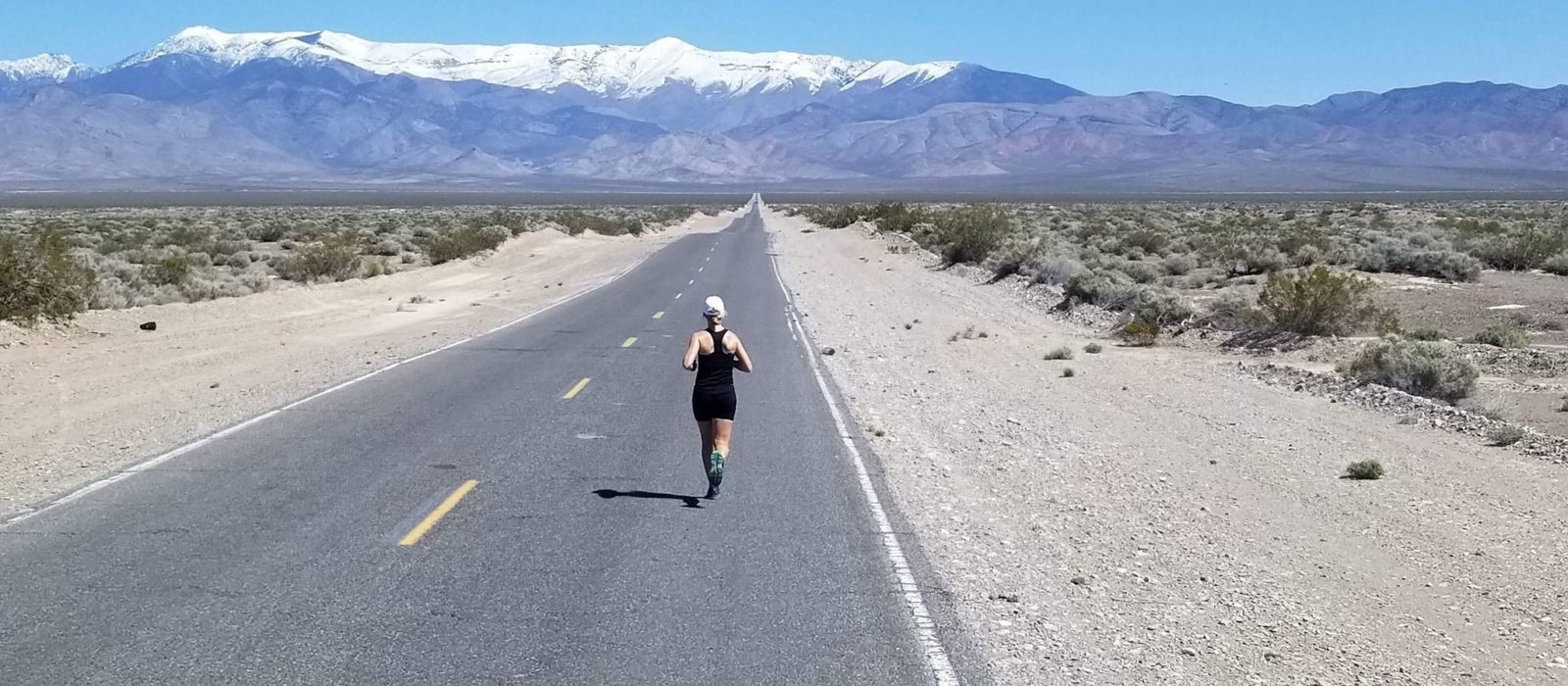
There is no doubt that high volume works for many. For others, not so well. The truth be told, high volume is best but only with the required prerequisites in place and the correct structure applied.
History tells us a couple of things. The best endurance athletes are high volume. The contradiction is that many high volume athletes suffer from frequent injury, hence the ongoing debate about high volume vs lower volume high-intensity training programs.
Training is a process, it’s not a constant struggle. Done right it’s a fulfilling and even invigorating process. Enjoy it, go long, get in the flow.
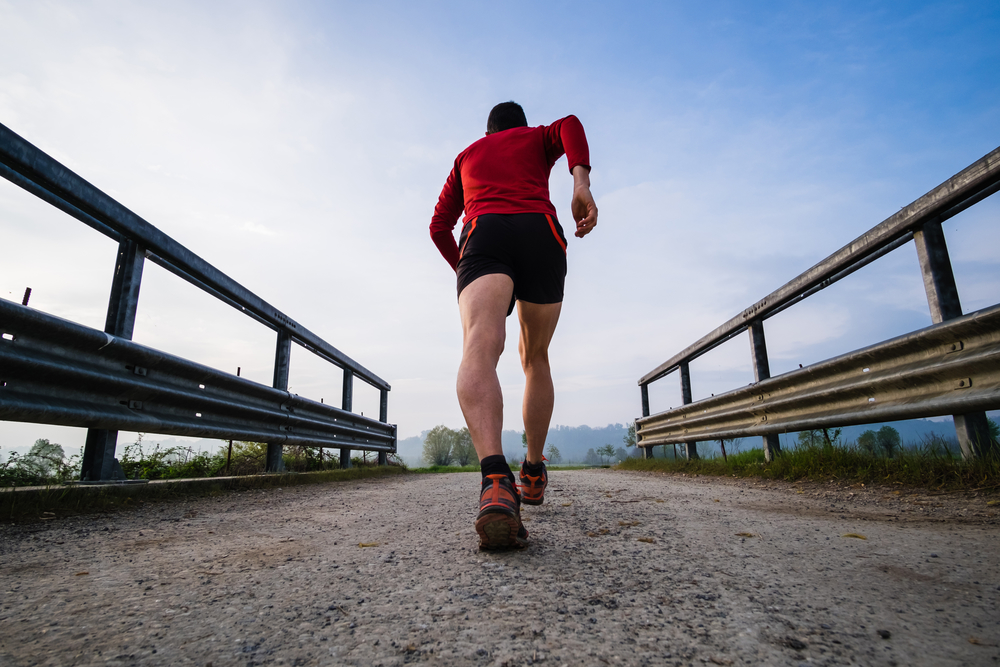
Progress cardiovascular health, basic muscular strength to support the repeatable and sustainable exercise. Many stop here assuming the next levels “just happen” with training volume.
As Aerobic health and strength improve, use this to improve technique through balance and timing. Swim, timing of the catch. Run, the timing of the pull and fall. Bike, timed unweighting and power application.
With timing in place, we now look to combine towards whole-body movement, all limbs and abdomen are coordinated and leverage the serape effect to provide synchronised power and reduce negative forces. Relax all that is not providing forward motion.
Achieve total psychological absorption in the swim, ride, or run. Mechanics are unconscious. You are at one with the environment, at one with the bike, the pavement, the water. Totally in the now, past and future are out of mind.
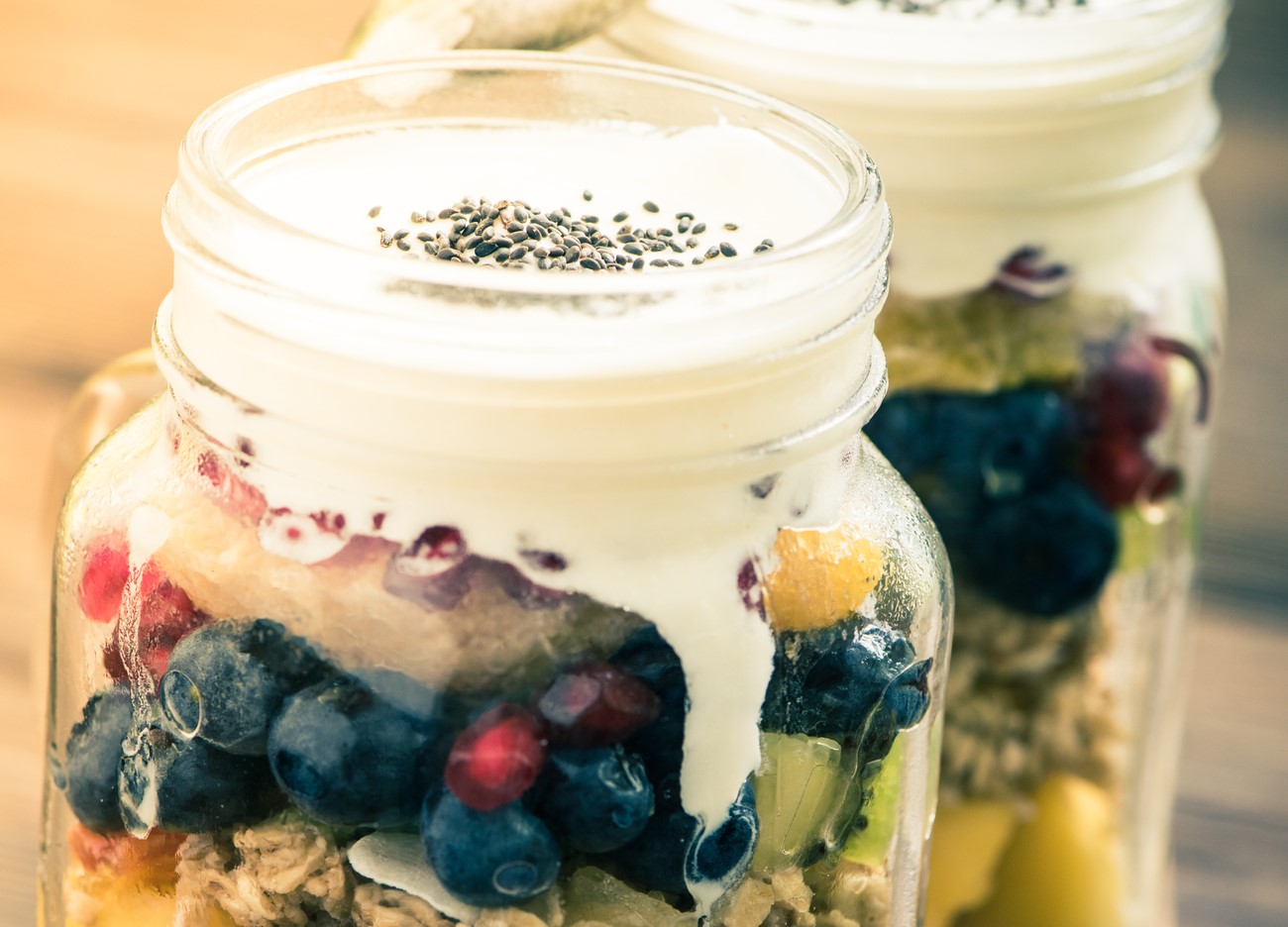
Backing up performances, whether training, racing, or on an adventure requires a little more planning and preparation than a single day effort. Generally speaking your condition on the later days of the event will have more influence on your result than the start.
Read More
I am planning to run Marathon de Sables (MDS) in April 2021, a 6 day desert run in the Sahara. To prepare I plan to have a couple of training runs on Morton Island to test kit and familiarize myself with sand running. Two months ago I mentioned my plans to some friends. I can’t recall who, but some wise guy suggested we should run around it, we all laughed. What a ridiculous idea!
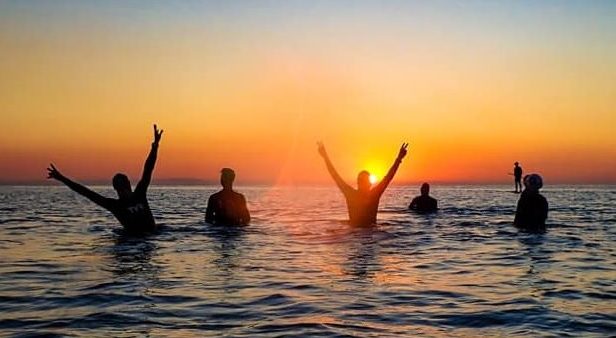
At Fitsets we love what you do, we are passionate about healthy & active lifestyles and enjoy assisting people grow and achieve their goals. It’s why we started FitSets!
Underpinning our services is our manifesto outlining the principles we apply to our coaching. These are derived from our values, values shared by our clients. We actually discuss these principles with prospective clients to ensure we have a match, ensuring we have alignment.
It’s a choice, if prospective client does not agree with the principles then it’s best they approach another service provider. There’s no right or wrong, no judgement. We have our approach, “we teach what we practice”.
Open communication, both ways, is important to a coaching engagement. Occasionally we have clients who have differing principles, some we can accommodate, others can lead to an amicable end to the coaching arrangement.
Some mismatch examples include, but not limited to:
We are passionate about helping clients to move towards healthy and productive training practices. For more details have a read our FitSets Training Guidelines and Principles.
We balance recovery & training.
We honour our priorities: Sleep, family, adventure and career.
We have a continuous and relentless focus on technique and efficiency.
Our training is 80/20 Easy/Hard.
We eat diverse real food nutrition, periodised to suit training phase.
We race hard and dig deep, very deep.
We live the adventure.
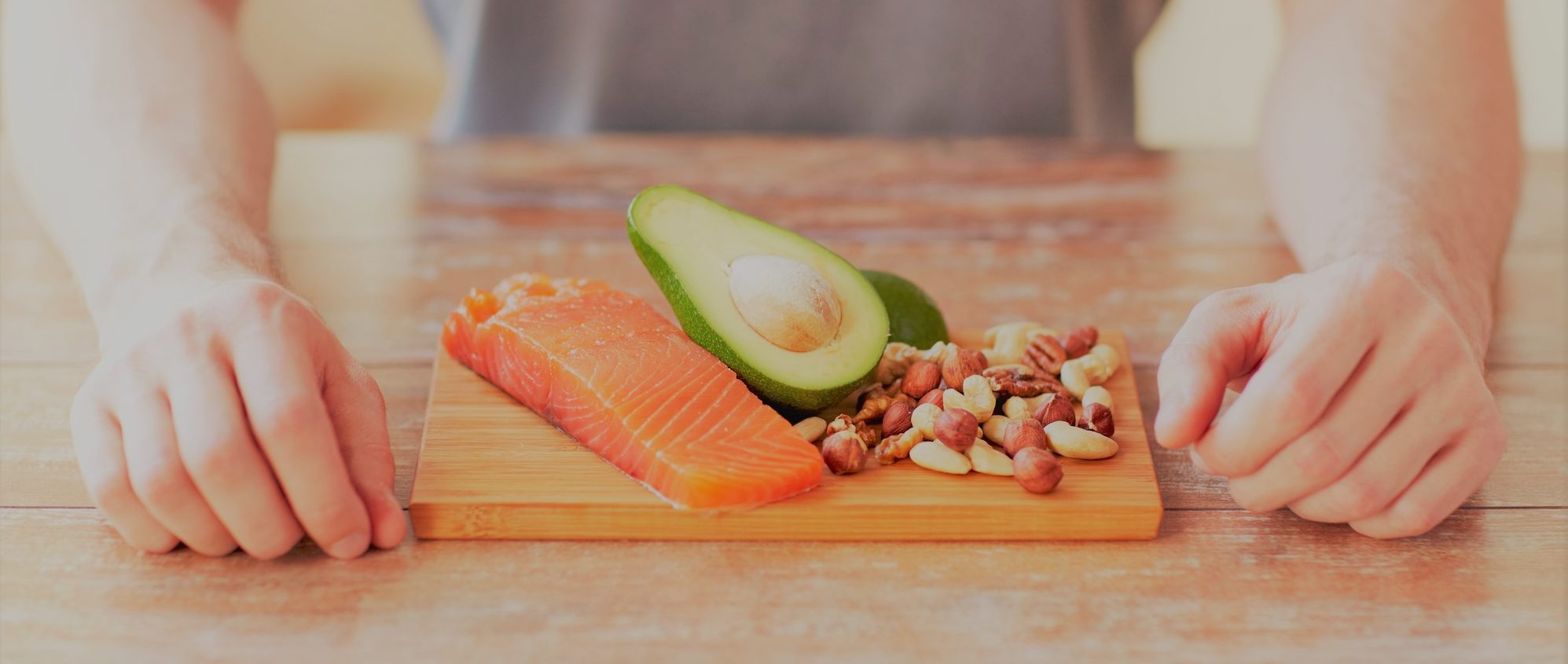
Fat adaption is interpreted as Low Fat or Keto by many endurance athletes. Although a Fat Adapted athlete may require less carbohydrate in some training sessions, it is less about reducing reducing carbohydrates and more about adapting the metabolic system to use the best fuel source for the intensity of the performance.
Read More